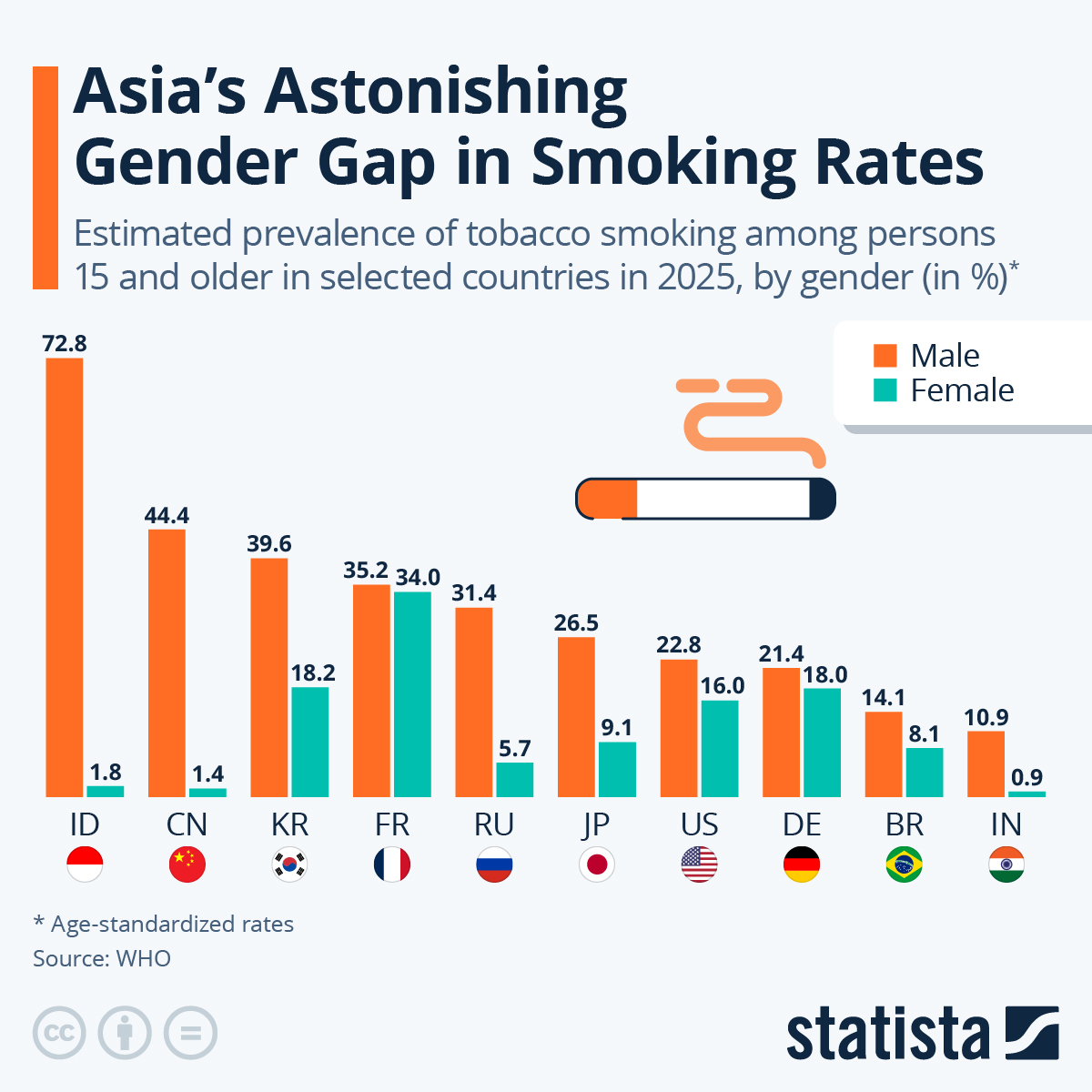As the world observes World No Tobacco Day on May 31, we’re taking a look at smoking prevalence in selected countries around the world, with a special focus on Asia and its astonishing gender gap in tobacco use. While Indonesia and China for example, are among the countries with the highest prevalence of tobacco smoking among the male population at 63 percent and 44.5 percent, respectively, the smoking rate among women in both countries is among the lowest in the world at 2.2 and 1.5 percent.
While there is a significant gender gap in tobacco use at the global level - the WHO reported a global prevalence of 36.7 percent among males and of 7.8 percent among females in 2020 - nowhere is the difference as pronounced as it is in Asia and the Pacific. While smoking among men is often associated with masculinity or social status in the region, it is stigmatized or frowned-upon for women to smoke.
Meanwhile countries with less traditional gender roles, like France, Germany and the United States see significantly higher smoking rates among women, while smoking among men is often much less common than it is in many parts of Asia.
World No Tobacco Day is a global initiative aimed at raising awareness about the risks associated with tobacco use and advocating for effective policies to reduce tobacco consumption. The day serves as a reminder of the devastating health effects of tobacco use, including various types of cancers, cardiovascular diseases and respiratory ailments. It also highlights the socioeconomic impact of tobacco use on individuals, families, and communities.




















